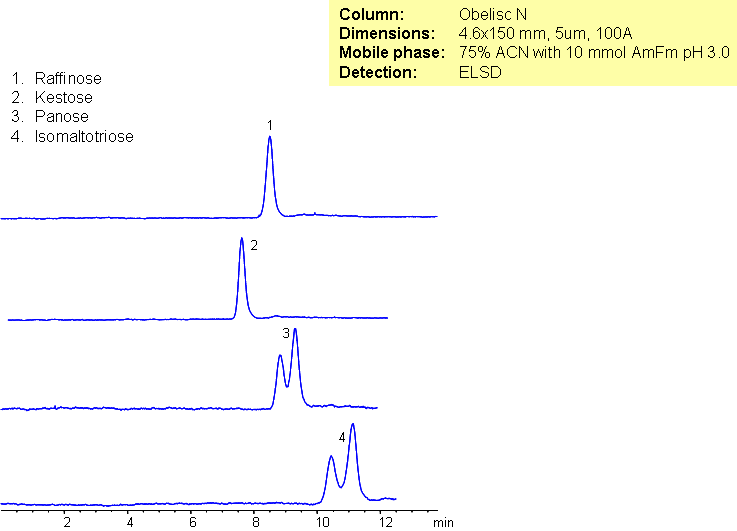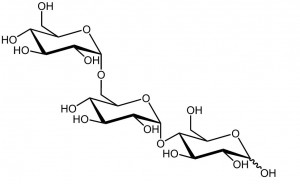| CAS Number | 33401-87-5 |
|---|---|
| Molecular Formula | C18H32O16 |
| Molecular Weight | 504.438 |
| InChI Key | ZCLAHGAZPPEVDX-MQHGYYCBSA-N |
| LogP | -7.2 |
| Synonyms |
|
Applications:
Separation of Trisaccharides on Obelisc N Column
July 6, 2015

Trisaccharides can be difficult to separate using conventional HPLC columns. The four trisaccharides panose, raffinose, isomaltotriose, and kestose have the same chemical formula, and the all have two glycosidic bonds connecting the three monosaccharides. Obelisc N was used as a stationary phase to separate trisaccharides because it is capable of multiple modes of separation. Obelisc N is a highly polar column that retains polar and charged analytes. Even though the trisaccharides differ only in regio- and stereochemistry they are resolved.
| Column | Obelisc R, 4.6×150 mm, 5 µm, 100A |
| Mobile Phase | MeCN – 75% |
| Buffer | AmFm pH 3.0- 10 mM |
| Flow Rate | 1.0 ml/min |
| Detection | ELSD |
| Class of Compounds |
Trisaccharides, Hydrophilic, Ionizable |
| Analyzing Compounds | Raffinose, Kestose, Panose, Isomaltose |
Application Column
Obelisc N
Column Diameter: 4.6 mm
Column Length: 150 mm
Particle Size: 5 µm
Pore Size: 100 A
Column options: dual ended
Kestose
Panose
Raffinose



